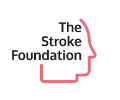Stroke Facts » Warning signs
warning signs
Understanding and being aware of the warnings signs of a stroke — as well as acting F.A.S.T. — could save a life and make recovery easier for the survivor.
F.A.ST. stands for FACE, ARM, SPEECH, TIME:
F
Is one side of the face dropping? Look at their eye, cheek or lips to check for any unusual asymmetry or droopiness.
A
Is the person experiencing arm weakness? Ask them to raise both arms to shoulder height and check for one arm that seems lower than the other.
S
Is the person's speech slurred, or are they speaking in an unintelligible way?
T
It's time to call 911 or your local emergency services. Be sure to tell them you think it's a stroke.
- Face drooping — Is one side of the face dropping? Look at their eye, cheek or lips to check for any unusual asymmetry or droopiness.
- Arm weakness — Is the person experiencing arm weakness? Ask them to raise both arms to shoulder height and check for one arm that seems lower than the other.
- Slurred speech — Is the person’s speech slurred, or are they speaking in an unintelligible way?
- Time to call 911 — It’s time to call 911 or your local emergency services. Be sure to tell them you think it’s a stroke.
Other important warning signs to be aware of are:
- The person seems to be having trouble understanding you or speaking coherently.
- The person appears to be confused, have trouble seeing or walking.
- The person is experiencing a painful headache.
- The person is experiencing numbness on their face, arm, legs, or a specific side of their body.
If you or someone around you are experiencing any of these warning signs, call 911 or your local emergency services immediately.
Here you’ll find information on inherent risk factors — meaning we all have them — and factors you can manage in order to prevent a stroke.
There are three main types of stroke: ischemic, hemorrhagic, and TIA; each one of them results in different treatment and recovery therapies.
Learn about factors that we can control have to do with our lifestyle and certain medical conditions that are preventable and treatable.

